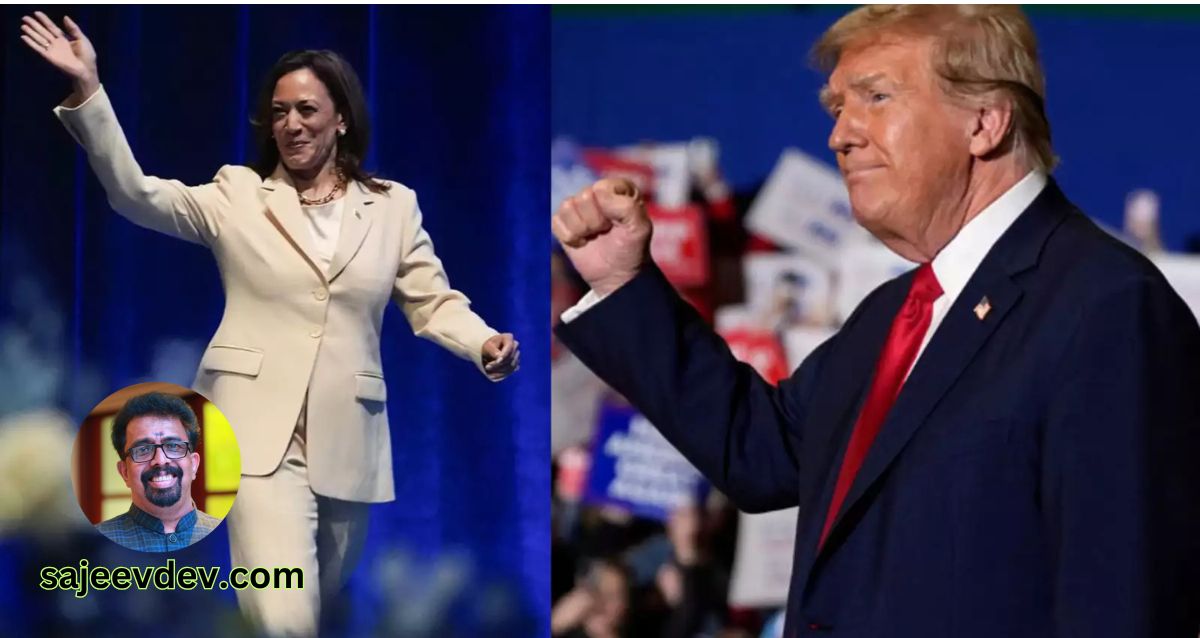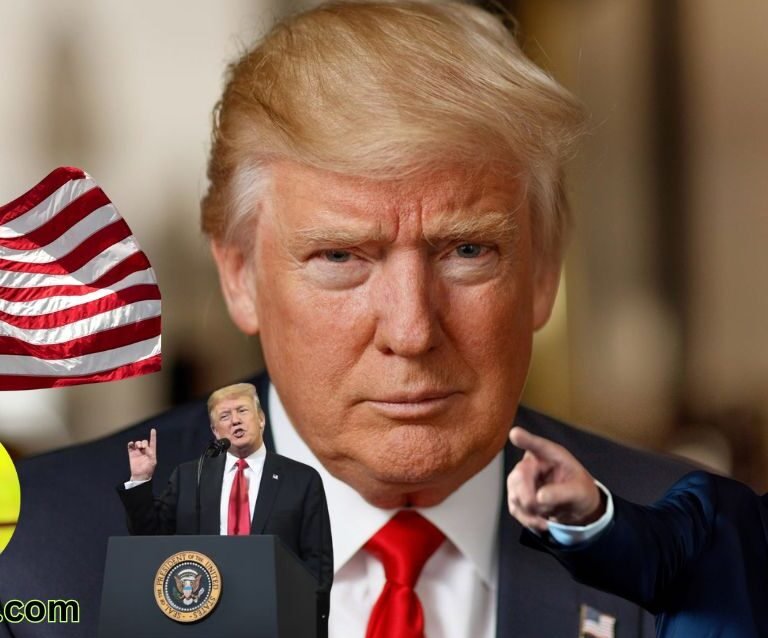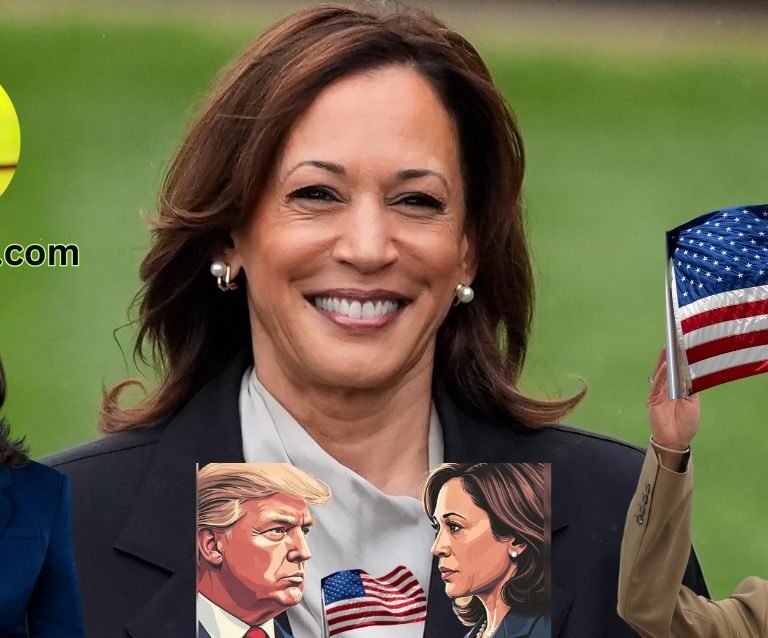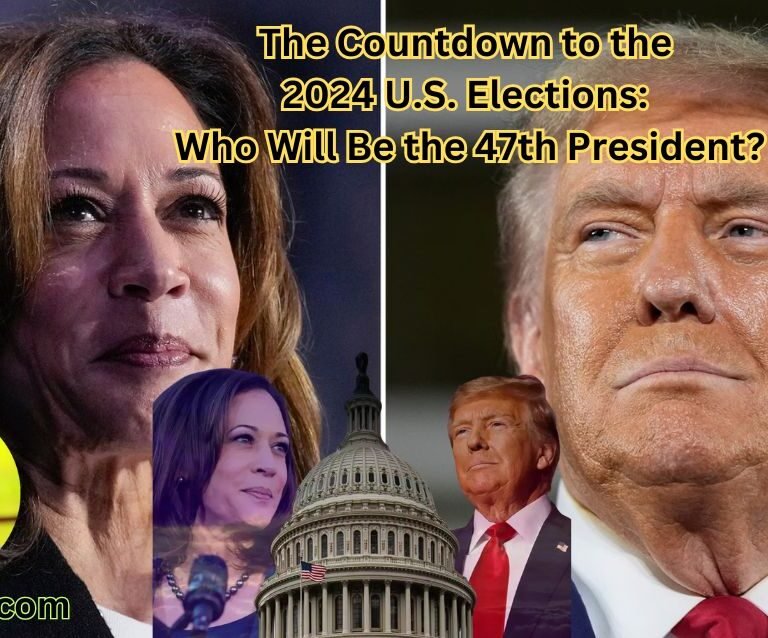Overview of the 2024 Presidential Election Landscape
The 2024 U.S. Presidential Election is poised to be a pivotal moment in shaping the direction of the nation. As voters prepare to head to the polls, there is a palpable sense of anticipation mixed with uncertainty. The political landscape has been markedly fluid since the last election cycle, reflecting significant shifts in voter sentiment influenced by various socio-economic factors. Issues such as the economy, healthcare, immigration, and climate change are at the forefront of public discourse, indicating a more engaged and informed electorate compared to previous years.
One of the most striking trends is the increasing polarization among voters, which has intensified debates among potential candidates. This polarization may play a crucial role in determining party nominations and overall voter turnout. In response to these trends, candidates are adjusting their strategies to resonate with a diverse array of constituents, aiming to appeal to both partisan bases and independent voters alike. The importance of understanding voter demographics and preferences cannot be understated, as they will undoubtedly shape campaign narratives and influence outcomes in key battleground states.
As the election season progresses, key dates on the calendar are crucial for candidates and voters alike. The primary election process will commence in early 2024, culminating in the Democratic and Republican national conventions by mid-summer. Following these conventions, the general election will take place on November 5, 2024. The lead-up to these critical dates is marked by debates, town halls, and fundraising efforts, all of which will play a vital role in determining which candidates can effectively galvanize support across the complex and varied political landscape of the United States.
Key Candidates to Watch
The 2024 U.S. Presidential Election is shaping up to be a pivotal moment in American politics, with a diverse array of candidates vying for the nation’s highest office. Among the leading figures, President Joe Biden is seeking reelection, representing the Democratic Party. His campaign focuses on building on the successes of his administration, particularly in areas such as infrastructure development and economic recovery following the pandemic. Biden’s platform emphasizes unity, social equity, and climate initiatives, aiming to galvanize support from both moderate and progressive voters.
On the Republican side, former President Donald Trump remains a dominant force, securing a strong base of support within the party. Trump’s campaign is characterized by its populist themes and a focus on economic nationalism, positioning him as a champion of everyday Americans. Additionally, Florida Governor Ron DeSantis has emerged as a formidable contender, appealing to traditional Republican values while also courting Trump’s base. His gubernatorial success, particularly regarding education and public health policies, provides a platform from which he can launch his presidential aspirations.
Beyond these frontrunners, the 2024 race features several emerging candidates who could influence the dynamics of the election. Individuals such as Nikki Haley, former U.N. Ambassador, and Senator Tim Scott from South Carolina are positioning themselves as strong alternatives to the more established figures. Haley promotes a message of internationalism and conservative governance, while Scott emphasizes opportunities and empowerment for marginalized communities. Their strategies appeal to various factions within the party, showcasing the evolving landscape of Republican priorities.
As the election approaches, watch for campaign strategies that address pressing issues such as inflation, public health, and foreign relations. Each candidate’s ability to navigate these challenges will be pivotal in securing their position within the race and determining the future trajectory of U.S. politics.
Debate Dynamics: Expectations and Predictions
The debates leading up to the 2024 U.S. Presidential Election are anticipated to play a pivotal role in shaping both candidate narratives and voter opinions. Historically, debates are a significant platform for candidates to present their viewpoints, challenge their opponents, and engage with the electorate. As the race intensifies, expectations surrounding these debates become increasingly pronounced.
Candidates are expected to invest considerable time and resources into preparations, aiming to hone their messaging and address potential vulnerabilities. This preparation not only includes practicing responses to anticipated questions but also analyzing past debate performances. Campaign teams will likely conduct mock debates, focusing on high-pressure scenarios to ensure candidates can articulate their positions confidently. With social media amplifying every debate, the scrutiny on candidates has intensified, making it crucial for them to perform well under pressure.
The key points of contention expected to arise during the debates include pivotal issues such as the economy, healthcare, immigration, and climate change. Each candidate will seek to differentiate themselves by presenting unique solutions to these pressing matters. Furthermore, candidates may aim to leverage personal stories to connect with voters emotionally. The effectiveness of their arguments may greatly influence voter perception and could lead to shifts in polling numbers following each debate.
Additionally, the role of moderators will be critical in maintaining focus on substantive discussions while navigating potential distractions. Their ability to balance questions and ensure that candidates engage with one another will significantly impact the debate dynamics. Ultimately, the debates are not merely a reflection of candidate stances, but a battleground where the fate of the electoral race can be significantly altered. As the election approaches, the anticipation for these key moments continues to build, highlighting their importance in the overall political landscape.
Hot-button Issues: Immigration, Healthcare, and More
The 2024 U.S. presidential election is poised to be significantly shaped by a number of pressing issues, with immigration and healthcare leading the list. Immigration remains a decisive topic, eliciting strong opinions across various voter demographics. Public sentiment on immigration policy has evolved, largely influenced by recent events such as shifts in border security and the pathways to citizenship. Candidates are expected to present comprehensive strategies that address both the concerns of those advocating for stricter policies and the perspectives of those promoting a more inclusive approach. This duality reflects the complexity of the electorate’s views, with varying attitudes present in urban versus rural areas.
Healthcare is another critical issue that candidates will likely focus on during their campaigns. The ongoing debates surrounding the affordability of healthcare and access to services drive considerable attention among voters. Proposals ranging from Medicare for All to options for preserving private insurance illustrate the spectrum of approaches candidates will adopt to engage with the electorate. Public opinion indicates a strong desire for reform, and how candidates articulate their healthcare plans could significantly impact their support across different demographics.
Other significant issues, including climate change, economic policies, and education reform, are also expected to influence the election landscape. Climate change has increasingly become a focal point for younger voters, prompting candidates to address sustainability and environmental justice more directly. In addition, economic concerns such as inflation, job creation, and wage growth continue to resonate strongly, particularly in economically diverse regions. Education policies, including student debt relief and educational equity, may also emerge as pivotal themes. As the election approaches, how candidates prioritize these issues may define their electoral strategies and impact their overall success.
The Role of Social Media and Technology in Campaigning
In the landscape of modern political campaigning, social media and technology have become pivotal tools for candidates seeking to connect with voters. The 2024 U.S. Presidential Election is no exception, as candidates are leveraging platforms such as Twitter, Facebook, and Instagram to disseminate their messages, engage with constituents, and cultivate their public images. These platforms serve not only as a means of communication but also as critical venues for shaping political narratives.
Utilizing social media effectively allows candidates to reach a broader audience at a fraction of the cost of traditional methods. Engaging with voters in real-time fosters a sense of community and can create momentum for campaigns. In addition, the rise of video content—especially through platforms like TikTok—highlights the shift in how information is consumed, encouraging candidates to adopt creative and visually appealing strategies to capture the attention of potential voters.
However, the increasing role of social media also raises concerns regarding misinformation and the manipulation of public perception. During the lead-up to the election, the propagation of false information can significantly impact voter opinions and decisions. Candidates must not only contend with their rivals but also navigate the challenges posed by the digital ecosystem, where unchecked narratives can thrive. Effective digital campaigning strategies are thus essential, focusing on transparency, factual accuracy, and proactive engagement to combat misleading information.
As technology continues to evolve, it will be crucial for candidates to adapt to changing platforms and digital tools. Innovations such as artificial intelligence and data analytics can provide insights into voter behavior, enabling campaigns to tailor their outreach efforts more effectively. Ultimately, social media and technology will remain vital elements of the 2024 election, shaping the strategies candidates employ to connect with the electorate across diverse demographics and perspectives.
Voter Engagement and Turnout Strategies
As the 2024 U.S. Presidential Election approaches, it becomes evident that voter engagement and turnout strategies are paramount in shaping the electoral landscape. Candidates are increasingly adopting innovative campaign approaches to connect with voters effectively and drive higher participation rates. One key strategy involves leveraging social media platforms and digital communication to reach a broader audience. Campaigns utilize targeted advertisements and engaging content to resonate with varying demographics, particularly young voters who are increasingly influential in the electoral process.
Grassroots organizing plays a vital role in these efforts. Candidates are encouraging volunteers and local leaders to mobilize communities, fostering a sense of ownership over the electoral process. This strategy not only cultivates a direct connection between candidates and potential voters but also ensures that local issues are addressed, enhancing the relevance of the campaign message. By nurturing these grassroots efforts, candidates aim to create a more inclusive political environment, appealing to a diverse voter base.
Another significant focus has been on mobilizing young and first-time voters. Recognizing the potential impact of these groups, many candidates have tailored their messaging to address issues that resonate with them, such as climate change and student debt. Initiatives such as campus voter drives and partnerships with youth organizations are being implemented to ensure that these voters are informed and motivated to cast their ballots.
Furthermore, the importance of early voting and absentee ballot options is being emphasized to increase voter accessibility. With the ongoing developments in voting technology and legislation, campaigns are actively educating their supporters on these options to ensure greater participation. By prioritizing voter engagement and turnout strategies, candidates can significantly influence the 2024 Presidential Election outcome, aiming for a more participative and representative democracy.
Polling Trends and Electoral Predictions
As the 2024 U.S. Presidential Election approaches, understanding current polling trends is vital for both political analysts and the electorate. Polling data can offer a glimpse into public sentiment, highlighting the preferences of voters across various demographics. The data is typically gathered through surveys that ask respondents about their voting intentions and opinions on candidates and key issues. Various organizations conduct these polls, employing methodologies that may include phone interviews, online surveys, and mail-in questionnaires. It is important to note that each method carries its own set of advantages and limitations, which can ultimately impact the reliability of the results.
Currently, several leading candidates are vying for the U.S. presidency, with polling indicating a competitive race. Notably, swing states such as Pennsylvania, Wisconsin, and Georgia are central to electoral strategies, as they can decisively influence the overall outcome of the election. Polls in these areas suggest a fluctuating voter base, with candidates experiencing varying levels of support. This variation can be attributed to multiple factors, including economic conditions, social issues, and candidate visibility. Historical trends indicate that voter sentiment in swing states can shift rapidly, making them crucial battlegrounds.
Electoral predictions based on current polling data imply a scenario that could favor either major political party. Analysts are cautious in making definitive forecasts, as numerous external factors—such as unexpected political events or shifts in public opinion—could significantly alter the landscape. Moreover, turnout rates, particularly among younger voters and minority groups, are often crucial indicators of electoral success. Therefore, while polling trends offer valuable insights, they must be viewed with a degree of skepticism as the election date nears, reflecting a dynamic political environment that remains in constant flux.
Challenges and Controversies in the Election Process
The upcoming 2024 U.S. Presidential Election is poised to face a myriad of challenges and controversies that could significantly impact not only the electoral process but also its integrity. Prominent among these challenges is the issue of voter suppression, which has garnered considerable attention in recent years. Various laws at the state level have been enacted purportedly to ensure election security; however, critics argue that these measures disproportionately affect marginalized communities, limiting their access to voting. This potential disenfranchisement could lead to substantial disparities in voter turnout and, consequently, the election outcome.
Election security remains another critical challenge as concerns about foreign interference and domestic cyber threats continue to loom large. The increasing sophistication of digital misinformation campaigns poses a significant risk, as candidates and their supporters may find it challenging to counteract false narratives that spread widely on social media platforms. With misinformation potentially influencing public perception and voter behavior, the need for effective strategies to combat such actions cannot be overstated. Candidates and political parties will need to prioritize transparency in their communications while also fostering media literacy among voters to mitigate the effects of misleading information.
Furthermore, the legal landscape surrounding election procedures adds another layer of complexity. Ongoing litigation over voter ID laws, mail-in voting regulations, and redistricting could lead to uncertainties that affect the election timeline and voter participation. Candidates must navigate these evolving legal frameworks while formulating campaign strategies that resonate with the electorate’s demands for fairness and accessibility. In addressing these multifaceted challenges, it is vital for all stakeholders involved to prioritize the democratic process, ensuring that the integrity of the 2024 Presidential Election is upheld amidst a climate of controversy and partisan politics.
What to Watch for as Election Day Approaches
As the 2024 U.S. presidential election draws nearer, several key trends and factors will undoubtedly shape the final outcome. First and foremost, the political landscape is experiencing a period of significant evolution. Voter sentiment is increasingly influenced by contemporary issues, including the economy, healthcare, social justice, and climate change. Candidates must remain attuned to these concerns, developing policies that resonate with the electorate, as public opinion is likely to sway the results on Election Day.
The candidates’ final campaigning strategies will also play a pivotal role as the election approaches. With advancements in technology, including the proliferation of social media as a campaigning tool, candidates are expected to engage voters more effectively and personally. This engagement will likely be reflected in targeted messaging that addresses specific demographics’ concerns. Furthermore, factors such as debates, advertisements, and grassroots movements will continue to gain traction as they potentially influence undecided voters, making it essential to monitor how candidates present their platforms leading up to Election Day.
Additionally, voter turnout is a significant aspect that could dictate the election’s outcome. High engagement during the primaries has led many analysts to predict that turnout could be robust in the general election. Mobilization efforts undertaken by both parties, as well as voter registration initiatives, will be crucial in determining how many citizens participate in the electoral process. As we approach November, observing these dynamics will be essential, as they may provide insight into which candidate holds an advantage.
Staying informed about these developments and understanding the broader context of the election will empower voters to make educated choices. Attention to campaign strategies, voter engagement, and pressing issues will be indispensable as the nation gears up for a pivotal electoral moment in 2024.









